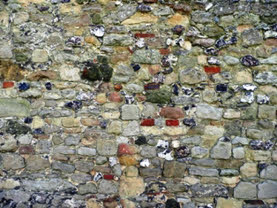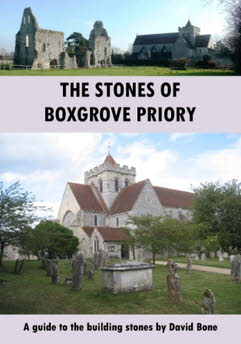with David Bone



Studying building stones can be a fascinating way of learning about the geology of an area. West Sussex is relatively poor in good quality stone that, conversely, means that we have a wide variety of both local and ‘imported’ stone types.
Town walks or church visits provide an excellent introduction to the subject. Alternatively, an excursion taking in a number of churches can demonstrate how the building stones reflect the local geology or proximity to transport routes such as by sea, river or rail.

There are around 200 stone-built churches in West Sussex, many of them dating to the 13th century or earlier. Their building stones often closely reflect the underlying geology, as well as the popularity of stones used in more recent phases of construction or restoration.
I have recorded over 60 different building stones (excluding minor variations) in my recording of the stonework across the county. Churches are an unusual but interesting way of looking at the local geology - but no collecting of rock samples!

Play the wall game in Chichester and identify the building stones - there are 10 types of stone in this wall alone.

Published in 2010, a 28-page A5 guide to the building stones of Boxgrove Priory. More details here.
The first building stones of Chichester date back nearly 2000 years to Roman times. Subsequent medieval, Georgian, Victorian and modern developments have introduced a wide variety of up to 40 or more different stone types.
Whilst Chichester is exceptionally rich in building stones, other towns can provide interesting walks. For instance, I have walk routes for Arundel, Havant (Hampshire) and others. A geological town walk is a great way of learning about rocks and their use as building stones. You will never look at walls in the same way again.